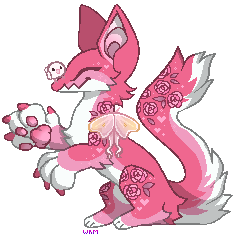beanie_kitten wrote:Hello! i have a cat, she just became an adult cat/1 year old so we need to put her on a diet but she just wont stop eating! if we give her less food she wont leave us alone and will keep biting our food packaging or eating from our plates. She isnt allowed most human food so im not sure what to do!
Since cats are the sort of animals that typically (when providing for themselves) will have many small meals during the day, their brain is wired to basically eat whenever they get food. It's simply a survival thing which they can't turn off, even though they have a human getting them as much food as they could ever need.
That is simply to say that if you want to let your cat decide their own portions, they will more than likely end up on the overweight side of things, and as cute as that may be, it isn't good for their health.
In terms of what you should do:
1. Put her foods in safe places where she can't get to them. Smelling it will only encourage her to try and get to it, so airtight containers in spots she can't reach would be ideal.
2. Do not give her human food, aside from the very occasional snack. Do not leave your plates out where she can get to them and lick them, as the stuff you were eating might be bad for her and she wouldn't realize it.
3. Check the packaging of her foods to see if there's any portion advice, or look for portion advice online. It can help to measure/weigh out dry food at first, but eventually you learn to eyeball how much looks like the right amount. Same with wet food, the packages often have recommendations like 1 packet per day, plus X grams of dry food, which you can then divide up into several meals throughout the day.
4. Set up a feeding schedule and stick to it. For example, I feed my cats twice a day, at noon and at midnight, so the "recommended amount per day" of food gets divided into two for each meal. Which for my cats means that each of them gets a half packet of wet food and about a handful of dry food at noon, and another half packet and another handful at midnight. Having a set schedule has really helped my cats understand that begging won't get them extra food, so they usually are only annoying for about an hour or two leading up to their next meal. If you have the time/patience for it, you can divide it into even more meals through the day, and I've known people who only do one meal a day also. The important part is just to stick with the schedule that you choose, as changing it too often will just be confusing for your cat.
5. Weigh them and keep track of their weight! You don't need to do it every day, or even every week, but occasional weigh ins can help you notice if the amount you are giving her is too little or too much. Slight weight fluctuations are fine, of course, but it's much easier to solve a weight problem early on (by just slightly decreasing their portions) than it would be if you let your cat get very fat, or maybe even sick. Cat weights can also vary quite a bit depending on their build - some will be naturally smaller than others, so there's other ways to check, such as feeling their ribs and backbone. You should be able to feel them, but not to the point where they feel like only skin and bones. And it's normal for cats to have a hanging belly/loose skin around their stomach, as long as it doesn't appear to be bulging to a point where you can barely feel their ribs, or if the ribs are basically sticking out. You can google "cat weight guides" to see some examples. ^^




























